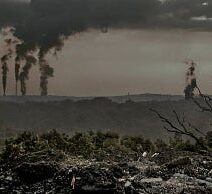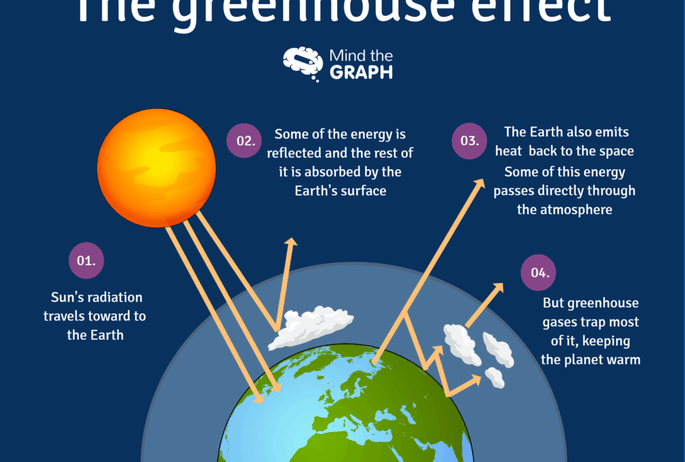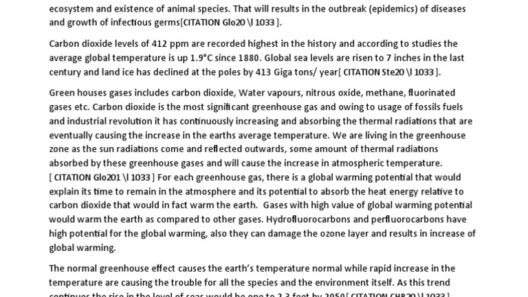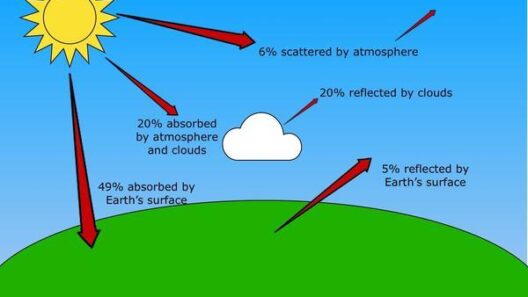Understanding the greenhouse effect is essential to comprehending climate dynamics and the overall functioning of our planet. This natural phenomenon, which has been a crucial factor in maintaining temperatures conducive to life, is now under scrutiny as human activities drastically alter its equilibrium.
The greenhouse effect refers to the process by which certain gases in the Earth’s atmosphere trap heat, preventing it from escaping into space. Named after its resemblance to how a greenhouse works, this effect is vital for sustaining life by stabilizing global temperatures. Without it, our planet would be inhospitable, as average temperatures would plummet well below freezing.
Several key elements work together to create the greenhouse effect, with the atmosphere absorbing and re-emitting infrared radiation. The primary greenhouse gases include carbon dioxide (CO2), methane (CH4), and nitrous oxide (N2O), each playing a distinctive role in this intricate thermal management system.
In essence, sunlight penetrates the atmosphere and warms the Earth’s surface. The Earth then radiates this energy back in the form of infrared radiation. However, greenhouse gases in the atmosphere capture a significant portion of this energy, reradiating it in all directions, which keeps the lower atmosphere warm. Conversely, various human activities, including the burning of fossil fuels, agriculture, and deforestation, have markedly increased the concentration of these gases since the Industrial Revolution, intensifying the greenhouse effect.
As a result, the enhanced greenhouse effect poses grave risks and challenges. The subsequent rise in global temperatures can lead to climatic patterns that disrupt ecosystems, weather phenomena, and biodiversity. So, how exactly does this complex interplay manifest in our environment? Let us delve deeper into its multifaceted implications.
The Connection Between Greenhouse Gases and Climate
Greenhouse gases interact with solar radiation in a manner that highlights their pivotal role in climate regulation. During the day, the sun’s rays bombard the Earth, heating its surface. The newly warmed Earth transforms this solar energy into infrared radiation, which escapes back into space. However, when greenhouse gases absorb this infrared radiation, they heat the atmosphere—a phenomenon that significantly influences climatic patterns.
Climate models indicate that rising greenhouse gas concentrations lead to increased average global temperatures. This warming translates to extreme weather events, altered rainfall patterns, and shifting seasonal cycles. Understanding these changes is critical for predicting and mitigating their impact on ecosystems and human societies.
For instance, as temperatures rise, polar ice caps and glaciers begin to melt, contributing to rising sea levels. Coastal areas are particularly vulnerable, facing increased flooding and the threat of habitat loss. The intricate balance of marine and terrestrial ecosystems hangs precariously as variations in temperature and precipitation disrupt established ecological relationships.
The Ecological Footprint of Climate Change
The ramifications of the greenhouse effect extend beyond mere temperature increases; they intricately weave through the fabric of life on Earth. As temperatures fluctuate, species face the compelling challenge of adapting to new climatic realities. Some may thrive, whereas others risk extinction, leading to profound shifts in biodiversity.
In many regions, changes in temperature and precipitation patterns can cause shifts in the geographic distribution of flora and fauna. Moreover, heightened atmospheric CO2 levels can lead to exaggerated plant growth, known as CO2 fertilization. It is paradoxical, as while certain plants may flourish, weeds and invasive species also tend to thrive, outcompeting native varieties and disrupting local ecosystems.
Additionally, changing climate conditions foster the spread of pests and diseases that threaten agricultural crops. Subtle changes in temperature and weather patterns directly affect food security, potentially leading to conflicts as communities vie for dwindling resources.
Addressing the Climate Crisis
Considering the dire impacts of the greenhouse effect, it becomes imperative to implement effective strategies to combat climate change. The transition towards renewable energy sources is a critical component in reducing greenhouse gas emissions. Wind, solar, and hydroelectric power offer sustainable alternatives to fossil fuels, allowing us to mitigate our contributions to the greenhouse effect and stabilize global temperatures.
More than just technological advancements, concerted government policies and community involvement play essential roles in fostering sustainable practices. Individuals can contribute through mindful choices, such as reducing energy consumption, utilizing public transportation, or adopting sustainable agriculture practices. Collectively, these actions can create meaningful changes in reducing the greenhouse effect and fostering ecological resilience.
In conclusion, the greenhouse effect is a complex yet essential natural process shaping our planet’s temperature. While it maintains a fragile balance that is conducive to life, anthropogenic influences have disrupted this equilibrium. Recognizing the significance of this effect and advocating for sustainable practices promises to safeguard the future of our planet for generations to come. By embracing this knowledge, we can work towards a more harmonious coexistence with our environment and mitigate the threats posed by climate change.







